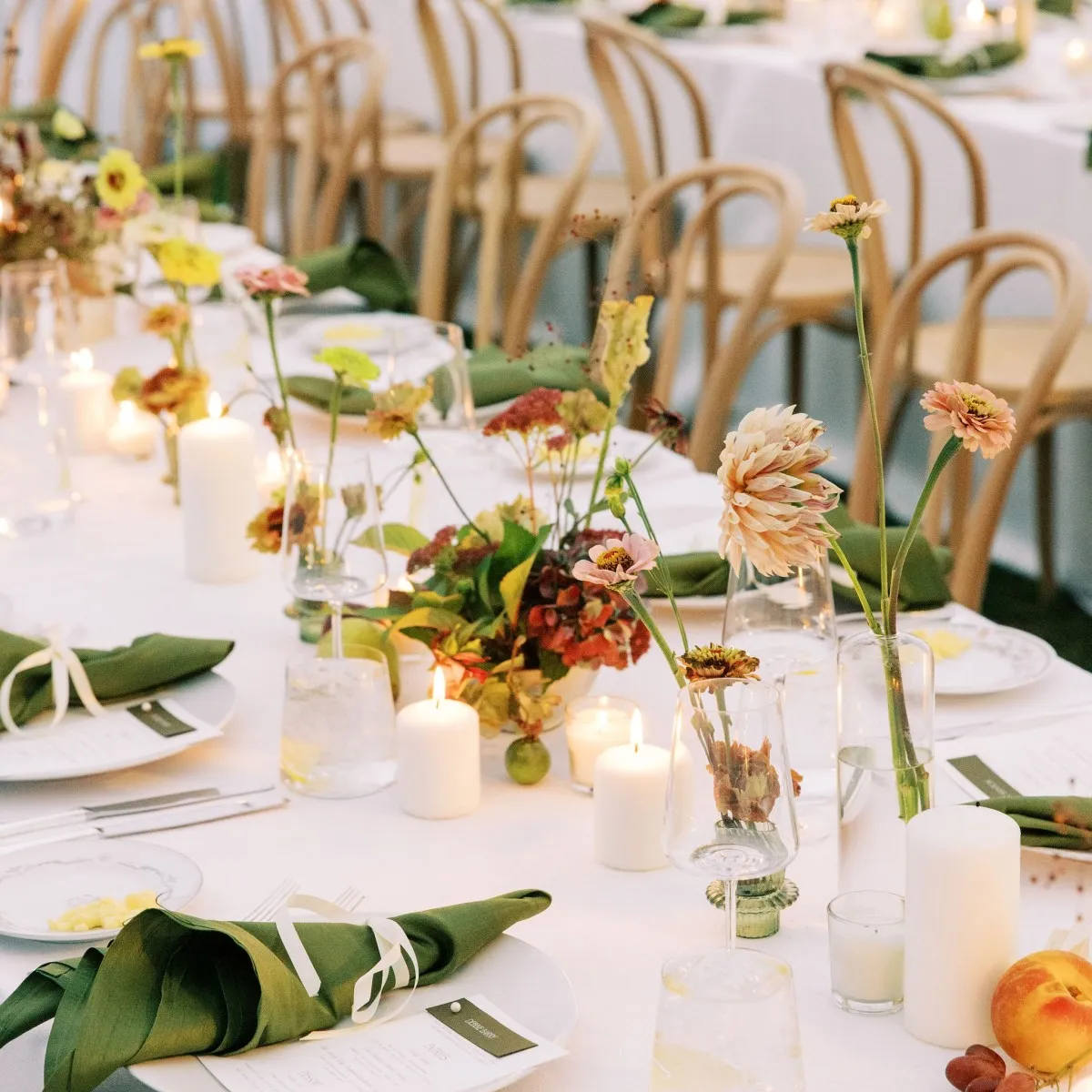Wedding Timeline, Part 2: 9-12 Months Before the Big Day
As your wedding timeline moves into the year of your celebration, you’ll have to make the majority of the big decisions. As part of our wedding timeline checklist, you’ll want to tackle tasks like hiring the rest of your vendors, thinking more critically about the theme and overall look of your event, and handling other logistics like your wedding website, registry, and more. The post-wedding celebration, the honeymoon, should also be on your mind at this point in your wedding timeline.
Hire all other vendors.
At the very least, this area of your wedding timeline should be dedicated to rounding out your vendor list. From your planner and venue coordinator’s recommendations to your own research, look for people with positive reviews and availability to work on your wedding day. Setting up interviews is best, since you’ll get a better feel for the person and see if they can truly bring your vision to life.
Think about the aesthetics of your event.
Around this time, your wedding timeline also allows you to think more about the aesthetics—the theme, color palette, and so on. Pinterest is an excellent place to explore ideas, and you can even create your own mood board to show to your vendors. More artistic professionals, such as floral designers, may even create a vision based on your initial conversations.
Shop for your wedding dress.
Brides may dream about their perfect dress early in childhood, but at this point in the wedding planning timeline, you should make all of your appointments to finally try them on. There’s a sweet spot between too few and too many bridal appointments to make, so talk with your planner about the best way to strike that balance. Again, you can look through Pinterest and even Instagram to get a few ideas before you shop. If you’re not quite sure about the fit you’d prefer, ask the sales representative at the bridal salon to pull several different options. From there, you’ll be able to clearly see which styles and cuts you’re gravitating toward. A number of other sources of inspiration may come from your wedding venue, theme, and more.
Discuss hotel blocks.
For most couples, there are guests who will need travel and lodging recommendations. Hotel blocks are popular because they usually come with discounted rates for the wedding couple and their guests. Ideally, you want to choose one or more hotels at a reasonable price point that’s also close to the venue. If you’re asking guests to drive to another location from the hotel, group transportation is also suggested by most wedding experts.
Schedule engagement photos.
Engagement photos aren’t just to celebrate your engagement, but it has a functional purpose, too. It gets you and your partner more comfortable in front of the camera, and many wedding photographers offer them in a package. This also gives you a unique opportunity to see your photographer in action before your wedding day, so scheduling this earlier on in your timeline is best. This builds your rapport for someone who will soon have a front row seat to capture your special day.
Build your wedding website.
Your wedding timeline is also marked by the significant points of contact you’ll have with your guests leading up to the big day. The first notice most guests will receive about your wedding day is the Save the Date (more on that soon!), and you’ll want to feature a link to your wedding website. The wedding website is a more modern staple that all couples create to keep their guests informed about their upcoming festivities. You can customize your own to feature key details, such as a frequently asked question (FAQ) page, guide to activities and hot spots in the local area, and more. Of course, you can also have fun with it and share more insights into your relationship, from the story of how you met to photos taken at your engagement shoot. Later on, you can also share a more elaborate wedding timeline to show the exact order of events to your guests ahead of the big day.
Register for gifts.
Wedding websites should have the capability to connect guests to your wedding registry, so you’ll want to build that in tandem. These registries have also become significantly more modern, giving couples a chance to share their desire to receive anything from classic cookware to unforgettable experiences on their honeymoon. Consider what you plan to register for and have a clear conversation with your partner. To make things easier, you can also delegate this job to one person and let them present their ideas to the other before publishing the registry. For couples who build a wedding website through Bliss & Bone, you can also set up a seamlessly connected cash registry to use to purchase your first home, go on your honeymoon, and more.
Book your honeymoon.
Gifts and vacationing…sounds pretty ideal, right? You’ll also want to include booking your post-wedding vacation around this time. Because you're also in the throes of planning and managing your wedding timeline, many wedding couples recommend enlisting a travel agent to take care of your hotel stay, meal reservations, excursions, and much more.
